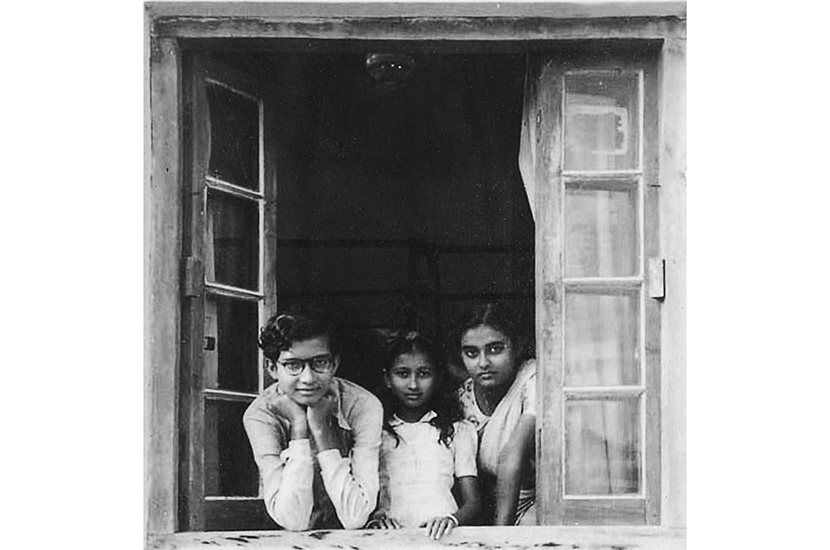Santiniketan, in West Bengal, about 100 miles from Kolkata, is one of the most magical places on Earth. The Bengali writer Rabindranath Tagore used a stretch of family land there to set up a great university. Modestly scaled buildings are scattered among groves; classes are conducted under the trees. The last time I was there, our rickshaw driver puttered to a halt outside a handsome residence. That, he said with some pride, was the house of Professor Amartya Sen.
I’m not sure that there are many professors of economics, even in university towns, whose presence inspires the cab drivers like that. Sen, over the past decades, has earned the gratitude of ordinary people by his honesty of thought and dedication to how their lives in general might be improved.
Perhaps his most famous work is on the causes of famine, inspired by his childhood experience of what happened in Bengal in 1943. He demonstrates unarguably that famine often has nothing to do with a shortage of food; rather, it reflects questions of infrastructure, and in particular the impact of prices and specific government policies. If famines have become much rarer over the past 40 years, that may be due in large part to Sen’s analysis.
Home in the World falls into a small genre of splendid autobiographies by Bengali intellectuals. It joins the treasured company of Tagore’s Childhood Days, Satyajit Ray’s lovely memoirs of Calcutta (as it then was), Nirad Chaudhuri’s two classic volumes, including The Autobiography of an Unknown Indian, and a book that ought to be much better known, Tapan Raychaudhuri’s glorious The World in Our Time. Sen’s book covers the first half of his life, from an upbringing in Bengal, a journey to study in Cambridge, up to his return to India in 1963. It has an admirable honesty of purpose, giving us a sense of the development of Sen’s thought and intellectual engagement, as well as descriptions of family and friendships. It is fortunate that Sen is such a lucid and accessible writer, since his fields of interest, it must be admitted, can test the general reader. What makes the book so richly enjoyable is Sen’s vividly curious personality, and his uniquely fresh examination of any apparently accepted fact.

He was born in 1933 to a secular family of intellectuals. They were friends of Tagore, and connected to Santiniketan. Tagore, who died in 1941, liked children, but Sen must now be one of quite a small number of people with clear memories of him. The family lived for a time in Burma, and were in Calcutta during the war.
One of the book’s strengths is its ability to evoke places, and anyone who loves West Bengal’s capital will respond to Sen’s wonderful portrait of the famous Coffee House, still hosting furious debates between the customers, and the revelations for a clever boy provided by one of the greatest of all bookselling districts:
As I turned the corner from Harrison Road into College Street, there was suddenly a massive constellation of bookshops of every kind. From books protected by glass-fronted wooden bookshelves inside the solidly built shops to heaps and heaps of books precariously balanced on ad hoc pedestals on the pavements — a million books calling for attention. I had the wonderful sense that I had come to the right place on Earth.
Aged 23, Sen was made a professor and head of department at the new Jadavpur University in Calcutta
As often with the autobiographies of brilliant people, much of the joy comes from first intellectual inquiries. As a child, Sen noticed that Hindu supporters of one soccer team liked to celebrate a win with a feast of the fish called rui; Muslims who backed the other preferred the dauntingly bony fish ilish. He deduced the utter unpredictability of a sporting outcome from the fact that the fishmongers didn’t put up the prices of either fish in advance. And there is this splendidly contrary argument: a geography teacher at school defined an island as a body of land surrounded by water, and asked for an example. Sen said ‘East Bengal’, which is entirely bounded by the rivers Padda and Brahmaputra, both originating to the north in the Manas Sarovar. No, said the teacher, the water that surrounds an island is an ocean or lake. But, Sen replied, what about the Ile de la Cité in Paris, in the Seine? Was that not an island?
The ingenuity shines out, but also the wonderful cussedness of his intelligence. The progress of civilisation depends on people who will hear a definition — whether of islands or the causes of famine — and say: ‘But that can’t be right.’ Sen is one of those.
What is so fine about his argument, here and elsewhere, is that he never gives the impression of omitting inconvenient facts to reach a predetermined conclusion. Many books about the British in India have deliberately not told the whole truth; one recent book described at length the horrible story of the Amritsar massacre, omitting the crucial detail that London immediately had the officer dismissed who ordered the shooting. Sen is rightly critical of the results of the whole imperial history, but is not playing to a popular audience on either side. It is based on output figures, which are damning, and Sen finds the time to observe truthfully that many of the best things about India after 1947 — democracy, the free press, the inspiration of English literature for Indian writers — came directly from the example of Britain, even if the British had taken steps to prevent their flourishing when they actually ran the place.
Sen came to Cambridge in 1953, at one of its most mythologised periods. The landladies of the town were a discouraging introduction: ‘She popped the question: “Will your colour come off in the bath — I mean in a really hot bath?”’ But Trinity ate him alive, immediately turning him into an Apostle. E.M. Forster became a friend, as did Piero Sraffa, the man who changed Wittgenstein’s philosophical mind by asking him what logical proposition was conveyed by a particularly insulting Neapolitan hand-to-chin gesture.
Comically, Sen finished his PhD thesis within his first year, and returned for a time to Calcutta where, aged 23, he was made professor and head of department at the new Jadavpur University. It was an exciting enterprise: one of the very few Indian universities prepared to admit mature students, and allegedly stuffed to the gills with former freedom fighters who had passed their university years in prison. Embarrassingly, however, a pile of telegrams caught up with him to let him know that he had been elected a Prize Fellow at Trinity. His ascent to Master of that college, and the Nobel Prize, had begun.
Nobody will resent the series of triumphs this book tells — Sen is so engaging, so full of charm and has such a clear gift for the graceful sentence. It’s a wonderful book, the portrait of a citizen of the world. It takes its title by arguing with that of a great novel by Tagore, where home and the world are alternatives. But though, like Tagore, Sen goes everywhere in the end, it is all beautifully rooted in that magically fecund corner between the Padda and the Brahmaputra, and begins with a list of the rivers of Bengal: the Dhaleshwari, the Meghna, the Mayurakshi, the Rupnarayan, the Madhumati.
Sen is a writer of such scrupulous, respectful care that it would be wrong not to mention a couple of points of factual dissent. Dr Kamal Hossain was not the first foreign minister of the newly independent Bangladesh but the second — or third, if you count the government in exile between March and December 1971. And I quibble with his saying that ‘although there were regular famines in India throughout the duration of British rule… there has been no famine in India since independence in 1947’. Though nearly correct, that is eliding two facts: there have in fact been famines in the territories that were under British rule pre-1947, such as the one in Bangladesh in the mid-1970s.
This is a superb book, wonderfully absorbing, full of its author’s beguiling personality, elegance and wit of presentation, and joyous in its celebration of the life of the mind.






Comments